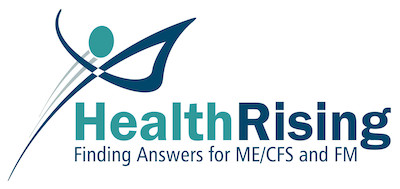

A Non-Opioid Drug for Fibromyalgia Soon to Hit the US Market

For the first time in 15 years, a drug has been approved for fibromyalgia in the U.S.
On August 15th, the FDA approved Tonmya for use in fibromyalgia (FM). It’s been a long wait – 15 years – since the last drug was approved for FM. I felt like pinching myself. Health Rising has been following the Tonmya (formerly TNX-102) saga for at least five years.
Tonmya seemed as dead as a duck at some points, and over that time, we’ve seen drugs come and go, but somehow, little Tonix Pharmaceuticals hung on through thick and thin and managed to produce a winner when others could not.
Fifteen years is a long dry spell for a disease afflicting approximately ten million people in the U.S. Seth Lederman, Tonix’s CEO, and the driver behind the drug, pointed out in our talk, the lack of drug approvals is not the FDA’s fault. The FDA is eager to approve new pain drugs that meet its standards, but drug companies are largely not stepping up to the plate.
That’s too bad. With the last 3 FDA-approved drugs (Lyrica-2007, Cymbalta-2008, and Savella-2009) producing “strikingly modest” effects, FM patients are surely ready to try a new approach. One large study reported that “only a minority of fibromyalgia patients continue taking medications for more than a short period of time due to either lack of efficacy, side effects, or both.” Even though long-term opioid use carries substantial risks and is not a good solution for many, Lederman noted that their research indicates that many doctors have turned to them, not the FDA-approved drugs, to treat fibromyalgia patients.
Getting a drug approved by the FDA, particularly if you’re a small drug company, is not for the faint of heart. Check out some recent examples in the FM and ME/CFS fields.
THE GIST
-
Tomnya reduces pain by helping people with fibromyalgia achieve deeper sleep.
It took 15 years, but a 4th drug called Tonmya has been approved to treat fibromyalgia in the U.S. With the three other FDA-approved drugs (Lyrica, Cymbalta, and Savella) producing “strikingly modest” results and most patients choosing not to continue with them, the FM community was past due for a new treatment option.
- Tonix Pharmaceuticals is a small drug company, and its achievement was remarkable given the travails it went through and the inability of other drug companies (one very large) to bring their FM drugs to market.
- Tonix had to endure two failed major trials – one because the dose was too small and one because of the COVID pandemic, but persisted, and with the last two trials coming in with good numbers, the drug was approved on August 15th.
- Tonmya is nothing like the past FDA-approved drugs (an anticonvulsant and two antidepressants with pain-reducing qualities). An updated, sublingual form of Flexeril (cyclobenzaprine), which is primarily used as a muscle relaxant, Tonmya is being used by Tonix as a sleep drug.
- Tomnya shoots the drug straight into the body, thereby increasing its bioavailability and efficiency, and bypassing the toxicity problems that were relegating Flexeril to short-term use.
- Tonmya is different from other sleep drugs in that it blocks four receptors associated with increased alertness. Its goal is not to reduce insomnia but to enhance deep sleep in FM.
- It’s not a miracle drug. It will not take your fibromyalgia away, and not everyone with fibromyalgia benefits. Studies in over 1000 people with FM show, though, that Tonmya consistently produces “clinically meaningful”; i.e., clearly noticeable improvements in pain, fatigue, and sleep in the fibromyalgia population at large.
- Side effects are minimal with a very small percentage of participants reporting fatigue, and others reporting temporary sensations such as tingling in the mouth when the dose is taken.
- Tonix will become available in the US in the 4th quarter of this year. Costs and insurance coverage are not yet available. Tonix is only approved in the US but the company hopes to become available in other countries over time.
- Pain specialists were happy to see a new treatment approach become available. Citing the limited and poor treatment options available, Philip Mease, M.D., Director of Rheumatology Research at the Providence Swedish Medical Center, said “Tonmya is a novel treatment approach that targets nonrestorative sleep that… can impact core symptoms, specifically pain.”
Misses

Crossing the “valley of death” where most drugs go to die is not easy. Somehow, Tonix, a small drug company made it.
Xyrem did well in its Phase 3 trial. In 2010, though, after the FDA required what Jazz Pharmaceutical considered crippling conditions for approval, the company stopped trying to get approval for Xyrem) in fibromyalgia. (The active component of the drug (GHB) had been used as a date rape drug). The company CEO, Bruce Cozzad stated, “we continue to believe there is a significant unmet medical need among fibromyalgia patients that could be met by JZP-6”. Interestingly, Xyrem, like Tonyma, sought to reduce FM patients pain by improving their sleep.
The pharmaceutical giant Daichii-Sankyo was so confident of their upgrade of the upgrade (a better version of Lyrica called mirogabalin) that it went straight to a huge Phase III trial (3,600 patients in 300 centers worldwide) and failed. It blamed changed criteria by the FDA for the failure. (Mirogabalin is now approved for neuropathic pain conditions in Japan, South Korea, Taiwan, Thailand, and China but not the U.S.)
Skip Pridgen, M.D, has been trying to get a duo-antiviral drug approach to fibromyalgia approved for over a decade. Pridgen first formed Innovative Med Concepts to bring the drug to market, then there was Virios, which is now apparently Dogwood Therapeutics and is not moving forward with the drug. Dr. Pridgen reported that his new company, PridCor Therapeutics, had developed a combo that is targeting Long COVID, which he believes can be applied to MECFS, FM and IBS with very good results. A paper is about to be published.
Many ways to fail on the pathway to FDA approval clearly exist.
Tonix’s Long and Winding Path
I talked with Seth Lederman, CEO of Tonix Pharmaceuticals, about Tomnya’s long and winding path to approval, what it does, how its different from past FDA-approved drugs for FM, when it will be available, and how the ME/cFS field could help.
Tonix’s path with Tonmya was no less easy. The company actually abandoned Tonix after the first big trial went belly up, but then, after a higher dose worked in a PTSD trial, it relaunched the drug in fibromyalgia. They got the dose right, but the timing was lousy, and the COVID pandemic subsequently tanked the trial.
Not many companies would keep going after two major failed trials, but Tonix retrenched, did a deep dive into their numbers, found they looked good, and persevered.
At times, it seemed like it was touch-and-go for Tonix. It was in penny stock territory for a while, but the last two trials, aptly named RESILIENT and RELIEF phase III trials, yielded promising results, and the drug was FDA-approved for FM this month.
Tonmya – a Sleep Drug for Pain in Fibromyalgia
Tonmya is nothing like the past FDA-approved drugs (an anticonvulsant and two antidepressants with pain-reducing qualities). An updated, sublingual form of Flexeril (cyclobenzaprine), which is primarily used as a muscle relaxant, Tonmya is being used by Tonix as a sleep drug.

Tomnya reduces pain by helping people with fibromyalgia sleep better.
As Seth noted in our talk, Tomnya’s precursor, cyclobenzaprine may have been the subject of the first major fibromyalgia drug trial. The drug worked well for a month, but after that, side effects like dry mouth, somnolence, dizziness, drowsiness/fatigue, and weight gain obliterated its effects. It turned out that over time, a metabolite of the drug built up in patients’ systems, causing the side effects.
The Flexeril trials caused the European Alliance of Associations for Rheumatology to give it a weak recommendation, based, interestingly, on a trend of improvement in sleep disturbance.
That caught the eye of Seth Lederman, then a professor of rheumatology at Columbia. Lederman was well acquainted with the work of Harvey Moldofsky, a pioneering sleep and pain researcher at the University of Toronto. Citing the interruptions in sleep he found, back in 1975, Moldofsky proposed that the “fibrositis” symptom complex be considered a “non-restorative sleep syndrome”.
In 1993, Moldovsky reported that “chronic fatigue syndrome and fibromyalgia have similar disordered sleep physiology, namely an alpha rhythm disturbance (7.5-11 Hz) in the electroencephalogram (EEG) within non-rapid eye movement (NREM) sleep that accompanies increased nocturnal vigilance and light, unrefreshing sleep.” It’s the “nocturnal vigilance” and light, unrefreshing sleep that sets diseases like ME/CFS and FM apart. More recent research calls this a “hyperarousal sleep disorder”.
Indeed, several studies suggest that the sympathetic nervous system (fight/flight) activation and sleep fragmentation play a key role in these diseases. It may not be so much that ME/CFS/FM patients are not getting enough deep sleep but that their deep sleep is not deep enough. A 2020 Australian ME/CFS sleep study concluded:
“Autonomic hypervigilance during the deeper, recuperative stages of sleep is associated with poor quality sleep and self-reported wellbeing.”
It was Moldovsky’s work that prompted Lederman to develop Tomnya, a sublingual form of Flexeril, to improve sleep and subsequently pain in FM. Ironically, Moldofsky, who was a founding member of Tonix’s scientific advisory board, died the day Tonmya was approved.
Tomnya shoots the drug straight into the body, thereby increasing its bioavailability and efficiency, and bypassing the toxicity problems that were relegating Flexeril to short-term use.
.Tonix’s goal is not to produce longer sleep nor to prevent insomnia, but deeper, more refreshing sleep. By reducing the activity of nervous system pathways associated with alertness and vigilance during sleep – and thereby relieving pain as well, Tonix aimed Tonmya at key areas of FM (and ME/CFS. It’s different from other sleep drugs in that it blocks 4 receptors associated with increased alertness. It’s notable that the hypnotic sleep drug Ambien, which does increase sleep times but does not affect deep sleep, did not improve pain levels in FM.
Not a Miracle Drug
Tomnya is not a miracle drug. Not everyone with fibromyalgia benefits, and those who do benefit don’t suddenly lose their pain or start sleeping the sleep of the dead. What studies in over 1000 people with FM do show, though, is that Tonmya consistently produces “clinically meaningful”; i.e., clearly noticeable improvements in pain, fatigue, and sleep in the fibromyalgia population at large.
Note that FDA approval is not a guarantee that everyone or even a majority of FM patients will respond. Like any drug, some people will respond very well to the drug, some people will do moderately well, some people will not respond, and a few will do poorly.
Major symptoms
- Pain Intensity – The mean reduction pain intensity (numerical rating scale) of about 30% that Tomnay produced in the latest trial is considered a “a clinically important” improvement. (The participants in the placebo arm received a modest improvement in pain.) Twenty-two percent of patients reported they’d received a >50% improvement in pain.
- Fibromyalgia Impact – The reduction in Fibromyalgia Impact Questionnaire score (FIQR) (-12.2) reflected a “noticeable, beneficial change in fibromyalgia symptoms and quality of life” (but is at around the threshold for “a clinically important difference”.)
- Fatigue – The 7.2 reduction in the PROMIS Fatigue Score signifies “a substantial positive change in fatigue symptoms”.
- Sleep – Likewise, the -1.7 sleep diary score signifies a “moderate and clinically meaningful improvement” which constitutes a ” clear and beneficial shift in sleep quality.”
While Tonyma didn’t eliminate fibromyalgia, it clearly produced significant improvements in major symptom areas.
Side Effects
The patient retention rate (81%) in the latest Tomnya trial is considered a “strong result,” and side effects were quite manageable. The most common systemic side-effects were not common at all and included headache (3% vs 1.8% placebo) and somnolence (drowsiness – 3% vs 1.3%). Other localized side effects caused by the sublingual (under the tongue) application (numbness (23.4% vs 0.4%), product taste abnormal (11.3% vs 0.9%), and tingling (6.9% vs 0.9%) were transitory.
Response
Pain specialists were happy to see a new treatment approach become available. Citing the limited and poor treatment options available, Philip Mease, M.D., Director of Rheumatology Research at the Providence Swedish Medical Center, said:
Tonmya is a novel treatment approach that targets nonrestorative sleep that… can impact core symptoms, specifically pain.”
Sharon Waldrop, the founder of the Fibromyalgia Association, stated, “
For over 15 years, this community has been underserved and waiting for new treatment options. This approval is a promising step forward and brings renewed hope to millions.”
Availability / Costs / Insurance
Tonix, a small drug company – but growing larger by the minute – is going to take on production, packaging, marketing, etc. itself. Lederman told Fierce Pharma
“Our approach is to be flexible, see what works, what doesn’t work. We do believe that this could be—maybe should be—a big pharma drug. But we’ve also seen that the trend in the industry is that more and more—particularly in the [central nervous system] space—that companies have to launch the drug themselves.”
Tonyma will be available later this year. Costs have not been announced, and Lederman said, if I got it right, that talks with the insurance companies are ongoing. Tonmya is not approved outside of the US, but as soon as the approval was announced, Lederman said Tonix was thinking about Canada, Europe (which has no approved drugs for FM), and Asia.
Tomnya is taken once at night before bed. The doses begin low for the first two weeks and then ramp up. See prescribing information here.
Lessons for ME/CFS
“If you don’t have an endpoint you don’t have a drug” Lederman
Lederman noted the reason fibromyalgia now has 4 FDA-approved drugs but has never had a biological biomarker is that it FDA-validated endpoints for pain exist. That process started in the early 2000s man named Lee Simon at the FDA’s pain division. Simon recognized that fibromyalgia was real and that drug companies could use assessments of daily pain to validate their drugs for fibromyalgia.
No such endpoint currently exists for fatigue in ME/CFS or any other disease. (One reason Tonix cannot claim that Tonyma helps with fatigue, even though the trials suggested that it does, is apparently that no validated endpoints for fatigue exist.) Lederman noted, though, that a recent report put out by the National Academies of Science, Engineering, and Medicine on chronic Lyme uses the work of fibromyalgia as a paradigm for moving forward with drug development in infection-associated chronic illnesses.
*Full disclosure – When Tonix Pharmaceuticals was a penny stock, I, feeling that FDA approval was imminent, for the first time in my life, bought some stock! I was right about the approval, but wrong about everything else. The stock was diluted at least once, and my small investment disappeared. It would take a miracle to break even at this point (lol).
Like the Blog? Keep the Information Flowing by Supporting Health Rising.
Health Rising is not a 501 (c) 3 Non-profit Organization







In the back of my mind for several years now i kept thinking that a cause will never be found and pharma will intervene with some drug(s) that will only mask symptoms and possibly do more harm..and now we see it unfolding
No drugs for this guy.Nobody knows what these or any other drug from big or little pharma does to people 10, 20, or 30 years down the road.
What happens when these drugs do harm?Good luck trying to win litigation and the lawyer that represents you laughs all the way to the bank. I was represented by a bad lawyer that took peoples monies held in trust and blew it all away at the local casino. What happened to this lawyer…he was asked if he wanted his lawyers license back and told he could keep practicing if he wanted to.
Some punishment hey
This drug scenario has been played out in history over and over and over meanwhile people ard finding real true cures on their own.
I went around in circles of md’s thinking that I just need to find the right dr. But I never did.im convinced the system is very broken and driven only by profit off of,in these cases, very vulnerable people.
Thats why we need to find the true cause of what these illnesses are…not bandaids.
Not sure why this is taking years and years for the REAL SCIENCE🤔